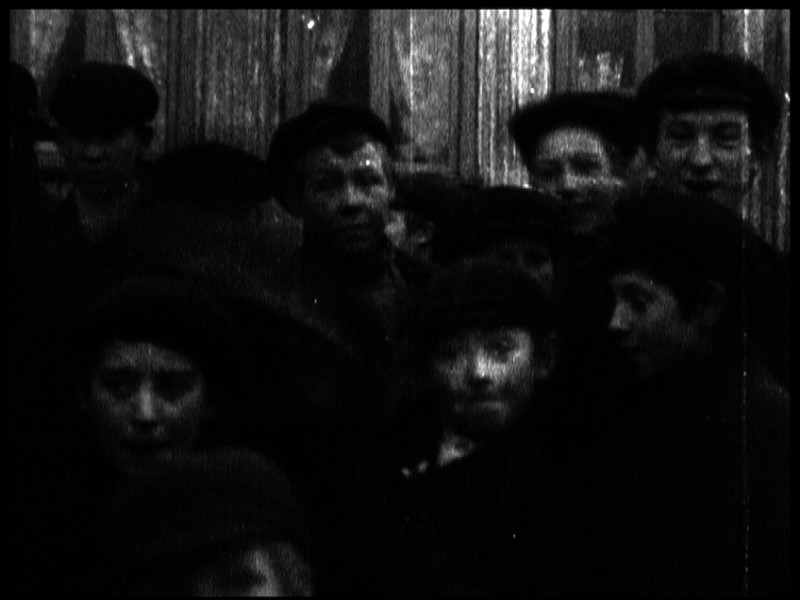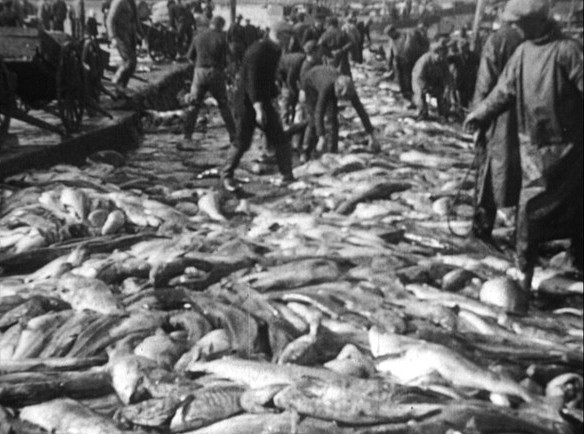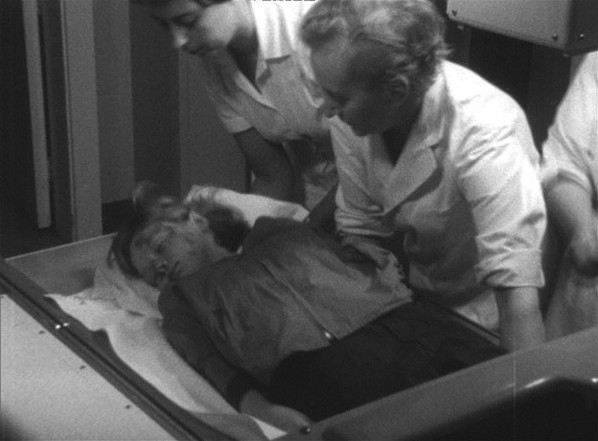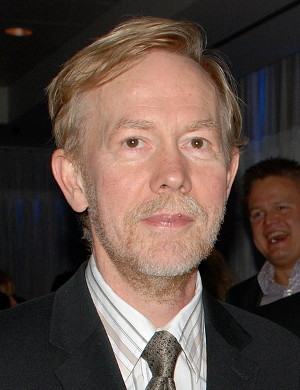Icelandic Documentary Film? Fish, Fishing Boats and Video Art
One of the retrospective sections at the Jihlava IDFF is called Transparent Landscape: Iceland, part of which are the masterclasses of Hilmar Örn Hilmarsson and Fridrik Thor Fridriksson, but also an exhibition of Icelandic video art in the DKO. In this interview, the festival dramaturge, Andrea Slováková, speaks about the nature of Icelandic creative documentary film, the origins of Icelandic video art, the specifics of the local film archive and the oldest Icelandic films. The picture is completed by an inside view from one of this year’s festival guests Icelandic director and screenwriter Thorsteinn Jonsson.
This year one entire section will be devoted to Icelandic documentary filmmaking and video creation. What do Icelandic video creations look like and what are the roots of video art in Iceland?
TJ: One of the first people to be devoted to video art in Iceland, was one of its the world-famous pioneers Steina Vasulka with her husband Woody Vasulka. Woody (Bohuslav) Vasulka graduated from FAMU around the year 1966, together they later worked in New York where they devoted themselves to experimenting with video.
AS: Now an entire section of a permanent exposition in the National Gallery of Iceland called The Vasulka Chamber is dedicated to their work. When you spend time in galleries and institutions in the field of cinema and art, on one hand, you cannot overlook the great deal of video art being created in the recent past or currently, nor its high quality- in terms of the conceptual aspect of the pieces and their execution. I was pleased that the Icelandic video installations carry a strong message and are based on surveys and research of relevant data, history or the current state of the portrayed topic – often times we can confidently compare the work that precedes creating video installations to that of one of the development phases of documentary film. Unquestionably, their strong suit also lays in quality technical presentation and a bold aesthetic. Artists have clearly mastered cinematic means of expression, and work with them deliberately, conceptually and innovatively.
In addition to standard screenings the section will be enriched by an exhibition in the form of video installations. Where will they be located and what will we see?
AS: Some phenomenological poetry. The exhibition will be located on the mezzanine floor of the projection hall of DKO I. and it bears the name Manifestations of the Passing. The videos portray how things or entities usually manifest, they show the passing of time, but only for the duration of active interception, then they no longer exits and never will. During the entire time in which we watch the videos, we think that at any second now it will all disappear (it will not, of course as it is a loop so it will disappear on Sunday). Finality vs. continuation is a common motif in contemporary video lyricism.

Firemens Exercise in Reykjavík (Alfred Lind, Bíópetersen Lind, 1906)
The preparation of the section dedicated to Icelandic cinema included research in the Icelandic archive. How does the Icelandic archive work- does it use any special or different procedures compared to the National Film Archive (NFA)? Were you surprised by anything?
AS: Research work in the Icelandic archive is similar to researching in the NFA or other European archives, only the Icelandic archive is much smaller- both in terms of the extent of the collections and the number of employees. But just like in the Czech NFA (contrary, for example, to the Russian archives in Krasnogorsk) they will not allow you to independently manipulate film copies, even when you tell them that you were taught how to assemble the sixteen millimetre film on to the editing table in film school (whereas in Krasnogorsk they will not even ask you whether you know how to work the table, instead you will receive a sketch showing you how to assemble the film, a bunch of boxes containing film and you are left all alone). In retrospect, the Icelandic archive was very helpful - for example, they managed to digitize almost all the films selected for screening by the date that they needed to be sent.
What did the actual research in the Icelandic archive and selection process of films look like?
AS: The Icelandic archive, like most European archives, has many films of its national cinema digitized, so you are looking at a lot of DVDs, not just film strips. We saw some of the films in the archive, some in the Icelandic Film Centre, which also has an online video library for curators and overall it presents Icelandic cinema very well, in a complete and knowledgeable manner. We also saw films and videos from local film and art schools and video galleries. The aim was to present pronounced thematic and aesthetic tendencies in pieces of work depicting reality.
‘‘In early Icelandic cinema, as is the case in other countries, we can observe the embellishment of utilitarian genres, for example, the educational film Accident used both staging procedures and creatively worked with sound.’’
The resulting body of film goes far back into the history of Icelandic cinema. What is the oldest film that visitors will see at Jihlava IDFF?
AS: It is one of the 4 oldest movies of Icelandic cinema – in part documentary and partly a staged sketch Firemens Exercise in Reykjavík from 1906 (according to historians the oldest films are from the year 1904, but those are considered to be lost).
How well acquainted is the Icelandic public with the oldest Icelandic films?
TJ: I do not think that the public is too familiar with them, although some shots from them appear in later films and television shows.
How would you characterize the oldest Icelandic films?
TJ: The first documentary films were created by enthusiastic amateurs. They lack structure and are poorly edited, but are valuable in terms of their content. They show us how people made a living, fought the sea, harvested crops and worked on the coast. Their jobs and how they carried out individual tasks is significant. The main objective was to document work processes and old traditions. In many of these films, we can see that people were very nicely dressed. They did not like the idea that they would be seen wearing some sort of dirty rags. Osvaldur Knudsen filmed people in remote areas while they performed traditional work such as harvesting barley like in the film Sveitin mili Sanda (around 1960), in it we can also see scenes such as sailing in open fishing boats in the big waves of the Atlantic Ocean. The battle with the sea is also clearly visible in Oskar Gíslason’s Lifesaving at Látrabjarg (1949), where we observe the rescue of English fishermen after they are shipwrecked under the steep dangerous cliff Látrabjarg. As another example, I can mention Iceland in Moving Pictures, from 1925, in which Loftur Gudmundsson attempts to capture all of Iceland. As it is the case with many other Icelandic films (so called Íslandsmyndir), he wants to show what tourists can see when traveling across the country.

Iceland in Moving Pictures (Loftur Gudmundson. 1925)
AS: Iceland in Moving Pictures, belongs to the "classics" of Icelandic film history. From the beginning, you feel it will be a metropolitan symphony – like films shot by Ruttman, Cavalcanti or Vertov. It is not so. Although, it is considered innovative in camera work, because it works with panning, it can otherwise be classed more with conventionally expressing documentaries. It is rather bold in terms of what it depicts. In addition to capturing the city with its typical features of modernity, it captures mundane everyday events in the country and Icelandic nature - here lie the roots of Icelandic audiovisual natural lyricism. It is interesting to see how in which periods Icelandic documentary production did/ did not absorb contemporary influences. In close correspondence with world trends, Icelandic documentaries work with staging and the reconstruction situations.
Can you give an example?
AJ: Perhaps the film Lifesaving at Látrabjarg, truly a captivating drama about a difficult rescue of a fishing boat crew, which the director Oskar Gíslason wanted to reconstruct. Close to shooting time another boat got trapped under that cliff - so the film is partially staged and partly a documentation. We can also observe, just like in other countries and even here, the embellishment of utilitarian genres, such as the educational film, Accident, which also used both staging procedures and creatively worked with sound – it even is probably the first Icelandic film to be presented at international film festivals (it is from the year 1962).
In the Czech Republic, the beginnings of documentary film are associated with custom made, reportage and scientific films. How do/ do not the origins of Icelandic documentaries differ?
TJ: This approach was also common and, for example, is reflected in instructional films. Many films were sponsored by large companies, such as the Association of Manufacturing Companies. Often their purpose was to encourage the export of fish, wool and to stimulate international trade in general. Loftur Gudmundsson, Oskar Gíslason and Vigfús Sigurgeirsson also belonged among these filmmakers.
’’Icelanders were not accustomed to films that asked complicated questions such as: Is work the most important thing in life?’’
The piece Fish under Stone (Thorsteinn Jonsson, 1974) will be presented at this year’s festival. What is it about? Why do you think it stirred social and media controversy?
TJ: Fish under Stone is the story of a man who searches for a cultured life in a fishing village on the south coast. However, he finds are people working in the fishing industry who are engaged in fishing or the packaging and processing of the meat. We see hard working people who focus on their job, leaving them with very little time to do other things, if any at all. The audience was accustomed to films in which bureaucrats would describe what kind of significant progress has been achieved, how many meters of asphalt roads have been laid, how many fishing boats left for sea and how many tons of fish they returned with. People were not accustomed to films that asked complicated questions such as: Is work the most important thing in life? Is money everything you need? Where do you find culture in places like those? Is anyone writing books? Making music? The debate that followed lasted a year and all the villages had to set up theatre groups, organize a painting exhibition or otherwise prove that we were wrong.

Accident (Reynir Oddsson, 1962)
On the other hand, another of your movies, The Harbour, which we will also see this year, is observational and lyrical. What approach do you prefer? Do you rather apply a critical gaze or an observational creative mode?
TJ: I shot The Harbour to get in to FAMU. Mr. Kučera, a pedagogist from FAMU, was on a visit to Iceland, where I met him and was asking what I needed in order to get accepted to the school. I think he suggested that I shoot a documentary film, which is what I did. I had an unsynchronized Bolex to which sound had to be added separately. That is why I could not do interviews, and the sound was not recorded on contact, but additionally composed. The result was an interesting interplay between sound and image. As I get older, I tend to lean more towards a critical approach, but I believe that in documentary work it is necessary to always stay loyal to your topic and be prepared to change your approach if you truly want to achieve something. It is about creating a balance between truthfully relaying what you see and expressing your opinion based on your own experience. It is also necessary to be constantly ready to learn. And it is important that it all makes sense. If that were not the case, why even shoot a film?
What other topics do you focus on in your work? What do you want your films to communicate and pass on to viewers? What are you currently working on?
TJ: I'm most interested in people and social topics. I want to understand how people live and why. I want my films to force the audience to wake up and become better human beings. I'm not a very optimistic person, but I hope that this is possible, and I think that filmmakers should strive for this. In recent months, I have been working on several screenplays for feature films, which are usually based on my previous documentaries. I enjoy writing about people I got to know and situations I experienced during the filming of my documentaries.
|
|
Icelandic director and screenwriter Thorsteinn Jónsson (1946) studied directing at Prague’s FAMU and received his doctorate from Nippon University in Tokyo. He directed nearly 30 documentary and fiction films, including the first Icelandic film to be shown at the festival in Cannes – Atomic Station (1984), based on the novel by Halldór Laxness. |




